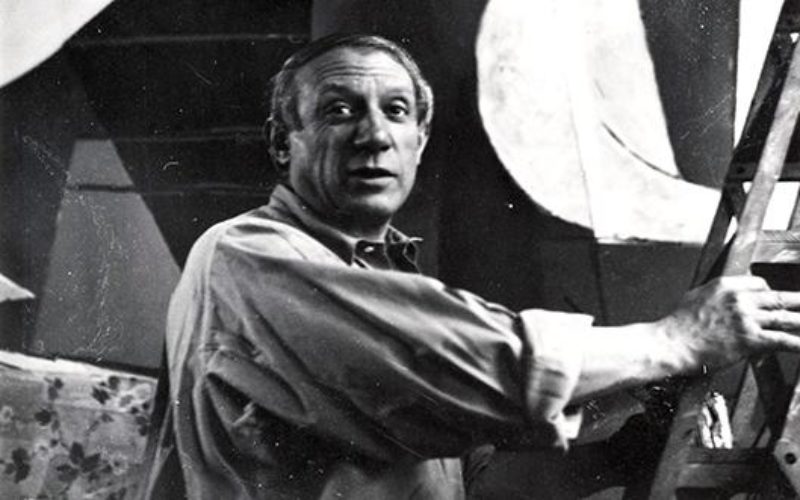
Picasso and the Exodus
A Spanish History of Art in Resistance
Les Abattoirs, Musée - Frac Occitanie Toulouse presents an exhibition dedicated for the first time to the relationship between Picasso and the Spanish Exodus. Spanning three floors of Les Abattoirs, it explores how the historical and personal upheaval of the Exodus affected Picasso and many other artists of his generation.
In 1937, a year after the start of the Spanish Civil War, while he was working on a painting commissioned for the Spanish Pavilion at the World’s Fair in Paris, Picasso learned of the bombing of Guernica and radically altered his initial theme.
In 1939, after three years of war, 500,000 Spaniards crossed the French-Spanish border before transferring to refugee camps with abominable living conditions. Following La Retirada, many Spaniards were living abroad, like Picasso, who had been living in Paris since 1900, thus becoming political exiles.
The Spanish situation strengthened Picasso’s political engagement against Francoism and for peace, both in his art and in his support for the Spanish exiles, particularly artists.
Here, their works are exhibited alongside his, by the likes of Óscar Domínguez, Apel.les Fenosa, Luis Fernández, Pedro Flores, Carles Fontserè, Julio González, Roberta González, Hans Hartung, Antonio Rodríguez Luna, Joan Miró, Manuel Ángeles Ortiz, and Remedios Varo, among others. Also evoked are those who created while living in refugee camps, as was the case for Antoni Clavé or artists J.Fín (Josefin Vilató) and Javier Vilató, Picasso’s nephew; or while working as a nurse, like photographer Friedel Bohny-Reiter.
The exhibition then deals with the theme of the cultural, artistic, and humanist resistance that continued into the post-WWII period, while militant exhibitions were organised by artists in exile from Paris to Prague, via Toulouse, and support committees continued to battle Franco’s regime.
Making the fervent wish only to return to Spain once liberated from Francoism, Picasso died in 1973 without having seen his native country again. Does a specific literary and pictorial culture exist for an artist who emigrated by choice and who became an exile despite himself? Picasso, nostalgic for Spain, and who had long understood his media power, staged his Hispanic roots and sourced inspiration from both art history and Spanish traditions. The debate on the return of Guernica to Spain, in the 1970s and 1980s, highlights the extent to which this work has become and remains a political symbol, which still today is one of the most often reproduced, filmed, and reinter- preted artworks of all time.
A contemporary art section, inviting over twenty artists, completes this exhibition at the Abattoirs. The works bear testament to Picas- so's importance in the message of artistic and individual freedom while others address the theme of exile today.
In the context of a series conceived on the scale of the territory, contemporary art exhibitions on the themes of history and exile will also be developed in other Toulouse sites and in the whole Occitanie region, under the title “I'm a native foreigner”.
Commissariat :
- Annabelle Ténèze, Chief Curator, Director of les Abattoirs
- Emilie Bouvard, Curator, Musée national Picasso-Paris
- Géraldine Mercier, Art historian
- Valentin Rodriguez, Curator, Director of Collections, les Abattoirs
With the works of: Eduardo Arroyo, Martí Bas, Friedel Bohny-Reiter, Xavier Bueno, Luis Buñuel Robert Capa, Ubaldo Izquierdo Carvajal, Antoni Clavé, Mercedes Comaposada Guillé, Honorio Garciá Condoy, Pere Créixams, Óscar Domínguez, Equipo Crónica, Apel•les Fenosa, Luis Fernández, J.Fín (Josefin Vilató), Robert Flaherty, Pedro Flores, Carles Fontserè, Julio González, Roberta González, Francisco de Goya, Emilio Grau Sala, Hans Hartung, Joan Jordà,, Antonio Rodríguez Luna, Baltasar Lobo, Dora Maar, Josep Marti, Blasco Mentor, Francois Miro, Joan Miró, Manuel Ángeles Ortiz, Gines Parra, José Palmeiro, Joaquin Peinado, Pablo Picasso, Josep Ponti, Joan Rebull, Robert Hessens & Alain Resnaisj, Roa, Antonio Saura, Antoni Tàpies, Bonaventura Trepat, Remedios Varo, Javier Vilató, Hernando Viñes
Guest artists: Pilar Albarracín, Carlos Aires, Daniel Andújar, Babi Badalov, Eduardo Basualdo, Jordi Colomer, Hélène Delprat, Democracia, Damien Deroubaix, Esther Ferrer, Dora García, Núria Güell, Amjad Ghannam & Khaled Hourani, Glenda León, Robert Longo, Eugenio Merino, Chiara Mulas & Serge Pey Daniela Ortiz, Pedro G. Romero, Nissrine Seffar, Oriol Vilanova
At the initiative of Les Abattoirs, Picasso and the Exodus will follow the Guernicaexhibition presented at the Musée national Picasso in Paris, which it extends with a new section.
It was initiated within the framework of the Picasso-Méditerranée programme launched by the Musée national Picasso – Paris, and will take place during the 80th anniversary of La Retirada.


In collaboration with

With the support of Mazars.
Informations pratiques
Location
Les Abattoirs
Horaires
From Wed. to Sunday from 12.00 to 18.00
Guided tours
Wednesday at 14:30
Saturday at 15h
1st Sunday of the month at 12:30
